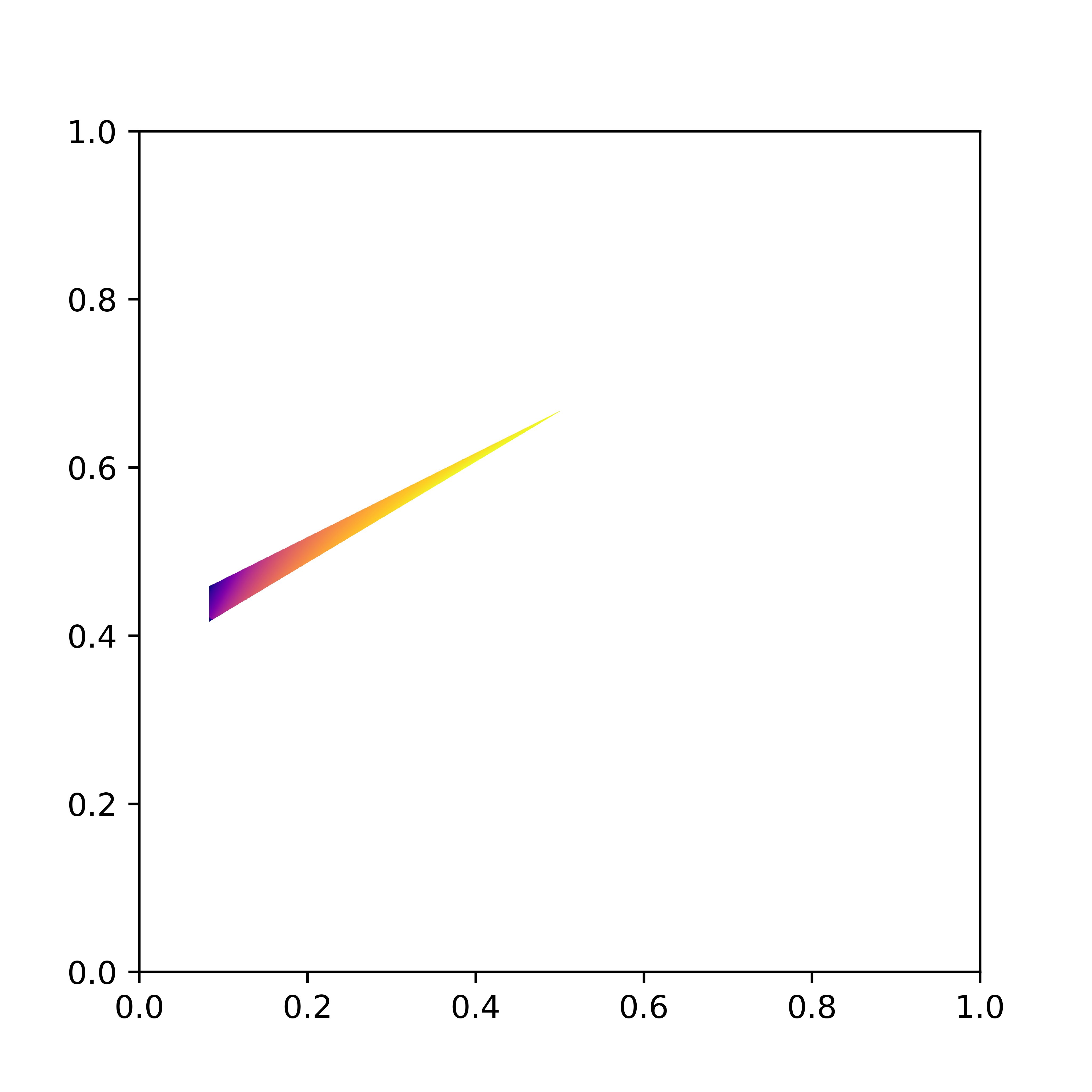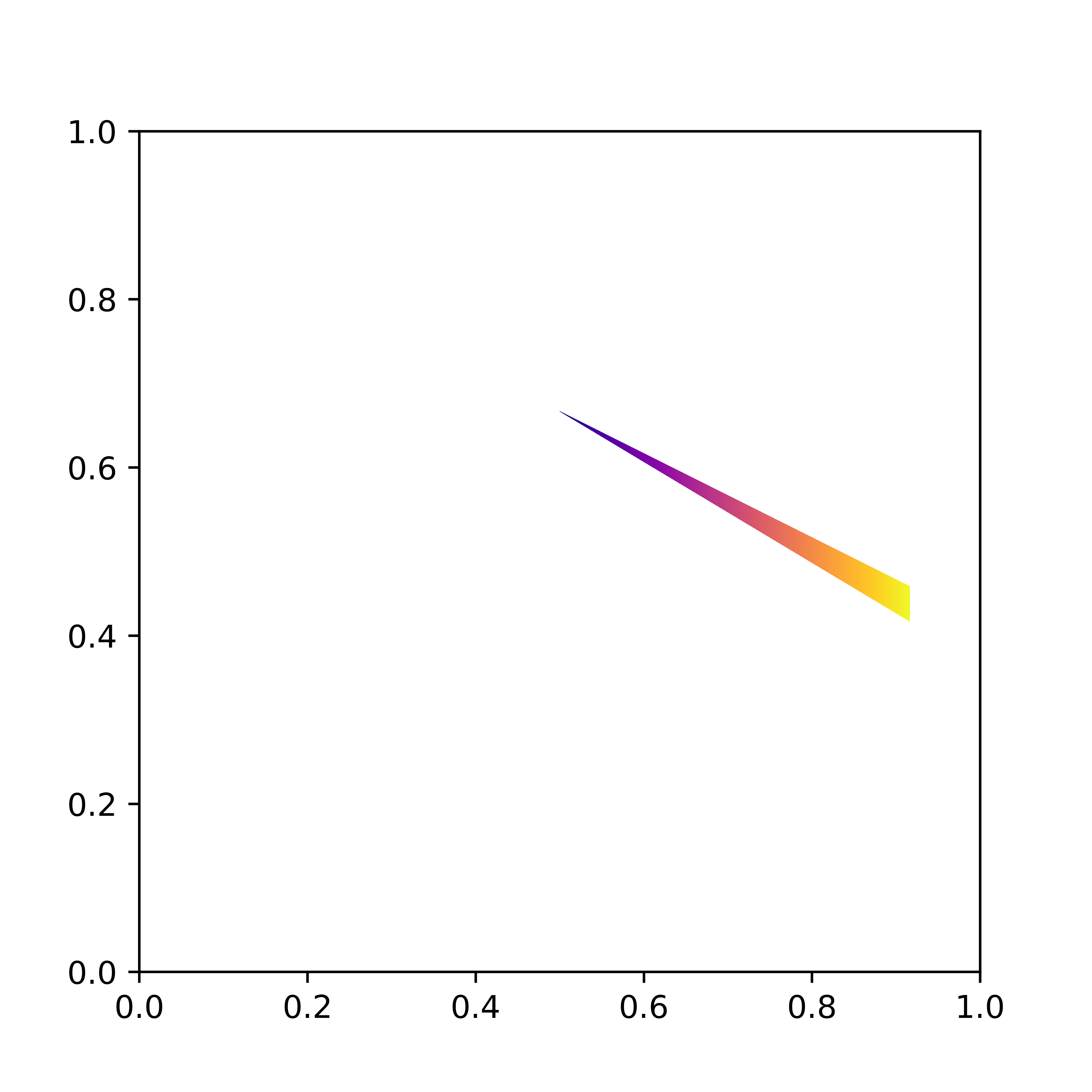Optimal Transport: the back-and-forth method
This page illustrates the method proposed in: A fast approach to optimal transport: The back-and-forth method [1]. Matlab code for the back-and-forth method can be found on GitHub.
Videos
The following videos illustrate the displacement interpolation [2] between two probability densities supported on a square.
Caffarelli's counterexample
In [3] Caffarelli showed that the optimal transport map can be discontinuous when a measure is supported on a non-convex domain.
Santambrogio–Wang's counterexample
In [4] Santambrogio and Wang showed that the displacement interpolant between two uniform measures supported on convex domains needs not be supported on convex domains. The following shows snapshots at time t=0, t=1/2 and t=1 of their counterexample. Note indeed that the initial and final measures (t=0 and t=1 respectively) are supported on a convex shape (a triangle) while the displacement interpolation at t=1/2 is not.
Below we show how mass is transported optimally from the initial measure to the final measure.
Rectangle to ring
References
[1] Matt Jacobs and Flavien Léger. A fast approach to optimal transport: The back-and-forth method. 2019.
[2] Robert McCann. A convexity principle for interacting gasses. Advances in mathematics 128 (1997), 153-179.
[3] Luis A. Caffarelli. The regularity of mappings with a convex potential. J. Amer. Math. Soc. 5, 1 (1992), 99–104.
[4] Filippo Santambrogio and Xu-Jia Wang. Convexity of the support of the displacement interpolation: Counterexamples. Appl. Math. Letters 58 (2016), 152–158.








